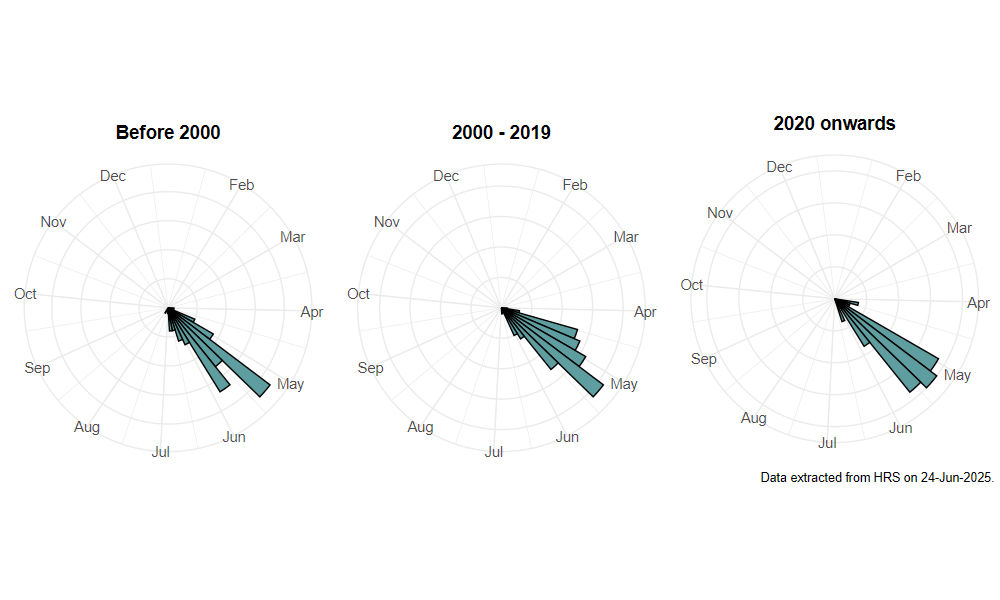Pocota personata (Harris, 1780)
Identification
Identification difficulty = 2. ![]()
![]() according to Ball & Morris, 20241
according to Ball & Morris, 20241
Biology
The larva is found in rot-holes in various trees, but most frequently Beech Fagus sylvatica and Poplar Populus sp. Larval development probably takes a number of years and larvae of different size classes can be found together in the same rot-hole. Adults are good bumblebee mimics and are seldom found, but can sometimes be seen visiting flowers, especially Hawthorn Crataegus sp. blossom, near larval habitat. They have also been observed hovering about the entrances to rot-holes.
Flight period
The following plots show the number of unique records per week excluding those reported to be of immature stages.

Status
Lower Risk (Nationally scarce) - Ball & Moris, 20142. Vulnerable (RDB2) - Falk, 19913 and Shirt, 19874.
Distribution
A rare species that is restricted to woodlands and parklands with ancient trees. There are records from urban localities like Hampstead Heath and Blackheath in London, and Banbury Road, Oxford, but most are old. It is mainly recorded from the forest belt of central-southern England, with the majority of records coming from classic 'dead-wood localities' like Windsor Forest and the New Forest, but there is a scatter of records elsewhere in the southern half of Britain, extending northwards through the Welsh border counties to the Wirral. There would appear to have been a westerly shift in distribution with many south-eastern records now antiquated.

Trends
The following plots show the Frescalo TFactor vs year and a map of the rescaled frequency (all records) for the species.
-
Ball, S., & Morris, R. (2024). Hoverflies of Britain and Ireland. WILDGuides (3rd ed.). Oxford: Princeton University Press. ↩
-
Ball, S., & Morris, R. (2014). A review of the scarce and threatened flies of Great Britain. Part 6: Syrphidae. ( No. 9). Species status (pp. 1–130). Peterborough: JNCC. ↩
-
Falk, S. (1991). A review of the scarce and threatened flies of Great Britain. ( No. 39). Research and Survey in Nature Conservation (pp. 1–194). Peterborough: NCC. ↩
-
Shirt, D. (Ed.). (1987). Red Data Books: 2. Insects. Peterborough: NCC. ↩